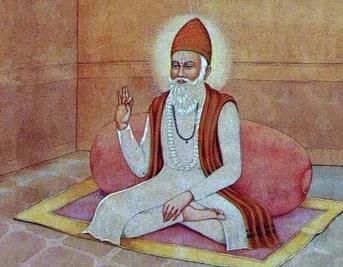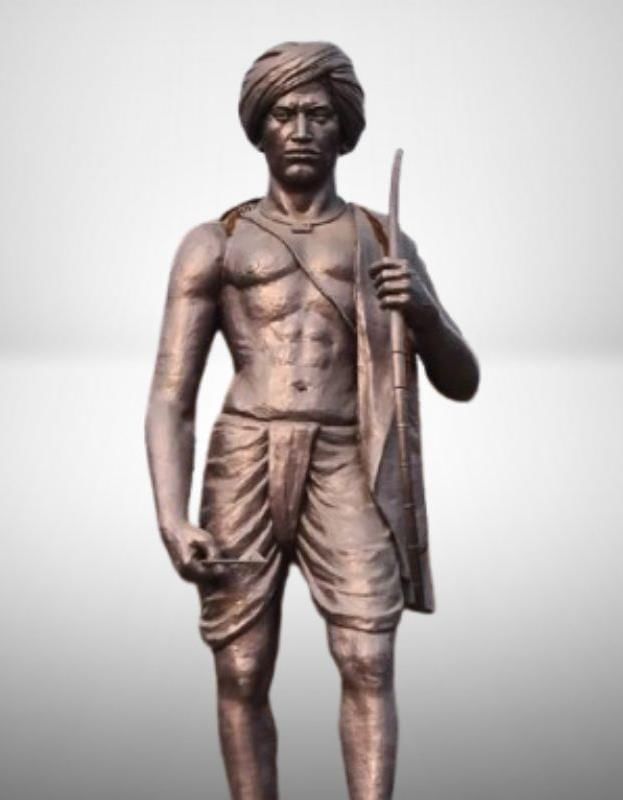History, Art and Culture: June 2025 UPSC Current Affairs | History for UPSC CSE PDF Download
Sikkim's Accession to India: A Historical Overview

Why in News?
As India commemorates the 50th anniversary of Sikkim's integration into the nation on May 16, 1975, it is vital to explore the intricate dynamics of monarchy, politics, and geopolitics that facilitated this accession.
Key Takeaways
- Sikkim was established as a kingdom in 1642, crowned by Tibetan lamas.
- The British East India Company formalized a protectorate over Sikkim in 1861.
- Sikkim's status remained ambiguous post-1947, leading to diverse opinions on its future.
- In 1975, over 97% of the population voted to abolish the monarchy and merge with India.
Additional Details
- Establishment: Sikkim was founded as a kingdom in 1642 when three Tibetan lamas crowned Phuntsog Namgyal as its first Chogyal (king).
- British Influence: Through the Treaty of Tumlong (1861), the British established a protectorate over Sikkim, allowing the Chogyals to maintain power while influencing Sikkim's affairs as a buffer state against Nepal.
- Post-Independence Ambiguity: After India gained independence in 1947, Sikkim's status was unclear due to its prior special relationship with the British, leading to debates among leaders like Sardar Patel and Jawaharlal Nehru regarding its integration.
- 1950 Indo-Sikkim Treaty: This treaty solidified Sikkim's position as an Indian protectorate while granting it internal autonomy, deepening Indian influence.
- Political Changes: Following the deaths of key leaders and the Chogyal, along with growing anti-monarchy sentiments, a tripartite agreement was established to implement political reforms.
- 1974-75 Referendum: Elections were held in 1974, leading to a new constitution limiting the monarchy's role, and in 1975, a referendum resulted in a decisive vote to merge with India.
The integration of Sikkim into India was not merely an act of annexation; it emerged from a complex interplay of negotiations, shifting geopolitical contexts, and internal aspirations for democracy. The case of Sikkim offers significant lessons in statecraft, regional diplomacy, and the balance between autonomy and national unity.
Sant Kabir Das
Context: Sant Kabirdas Jayanti was celebrated on June 11, marking his 648th birth anniversary. This occasion honours the 15th-century poet-saint’s timeless contribution to spiritual unity and social reform.

About Sant Kabir Das:
Who Was Sant Kabir Das?
- Sant Kabirdas was a 15th-century mystic poet, Bhakti saint, and social reformer who lived in Varanasi, Uttar Pradesh.
- Believed to be born in 1440 and raised by a Muslim weaver family, Kabir’s life symbolized religious convergence and spiritual universality.
- He authored Bijak, Sakhi Granth, Kabir Granthavali, Anurag Sagar, and many of his verses appear in the Guru Granth Sahib.
Kabir and His Philosophy:
- God resides within: Kabir taught that true divinity lies in self-realisation, not in temples or rituals. He urged seekers to introspect rather than perform empty ceremonial acts.
- Nirguna Bhakti: He rejected anthropomorphic deities and propounded devotion to a formless, universal divine consciousness (Nirguna Brahman).
- Human dignity over ritual: He opposed religious dogmas and caste-based discrimination, promoting ethical conduct as superior to ritual purity.
- Seva and Simplicity: Kabir emphasized humility, charity, and remembrance of God’s name (Nam-smaran) as the path to spiritual liberation.
- Social Equality: He questioned hereditary hierarchy, upheld non-violence (Ahimsa), and declared all beings equal in the eyes of the divine.
Kabir’s Influence on Sects:
- Kabir Panth:. spiritual order based on Kabir’s teachings emerged, spreading his egalitarian philosophy across villages and towns in northern India.
- Influenced Sikhism: Guru Nanak admired Kabir’s thought; many of his verses are enshrined in the Guru Granth Sahib, shaping Sikh devotion and ethics.
- Dadu Panthis & others: Kabir’s inclusive and non-sectarian teachings inspired several movements that challenged orthodoxy and ritualism.
- Cross-religious following: Hindus and Muslims alike revered him, seeing in him a figure that transcended religious divisions and embodied spiritual truth.
Relevance of Kabir’s Philosophy in the Modern World:
- Religious Harmony: In an age of rising intolerance, Kabir’s teachings offer a bridge between communities through shared spiritual values.
- Social Justice: His critique of caste and privilege aligns with today’s constitutional ideals of equality and dignity for all.
- Minimalism and Sustainability: His advocacy of contentment and simplicity provides philosophical grounding for sustainable living.
- Humanism over Ritualism: Kabir’s focus on inner purity and conduct resonates with modern ethical discourse beyond religious boundaries.
- Spiritual Inclusivity: He legitimised multiple paths to truth, promoting tolerance for diverse beliefs in an increasingly pluralistic world.
Conclusion:
Sant Kabir Das remains a beacon of moral courage, spiritual universality, and social justice. His couplets, rooted in simplicity, cut across time and still inspire unity, reflection, and reform. In an age of polarisation, Kabir’s words echo as a call for compassion and conscience.
Bhagwan Birsa Munda

Why In News
- PM pays tribute to Bhagwan Birsa Munda on the occasion of his Martyr’s Day.
About Bhagwan Birsa Munda
- Early Life: Born on 15th November 1875 in Ulihatu of the erstwhile Bengal Presidency, Birsa Munda was an Indian freedom fighter, religious leader, and folk hero from the Munda Tribe. He learned teachings from a Vaishnav monk, which influenced his beliefs and actions.
- Founder of New Religion “Birsait”: Birsa Munda founded the new religion of Birsait, which preached the belief in One God. The Munda and Oraon communities joined this sect, challenging the British conversion activities of tribals. Through this religion, he spread a strong anti-British sentiment. His followers referred to him as ‘Dharti Abba’ or ‘Father of Earth.’
Munda Rebellion
The Munda Rebellion, also known as ‘Ulgulan’ or the ‘Great Tumult,’ was a tribal movement led by Birsa Munda against the British Raj. The rebellion aimed to establish Munda raj and challenge the colonial land revenue system, Zamindari system, and forced labor imposed on tribals. The primary grievances included the introduction of the Zamindari system, which displaced tribals from their land, and exploitation by outsiders or Dikus who took control of tribal lands and resources.
- Birsa Munda and his followers employed guerrilla warfare tactics to target symbols of British power, such as police stations, government buildings, and landlords’ establishments.
Outcomes of the Munda Rebellion
- Chotanagpur Tenancy Act: In response to the rebellion, the British government introduced the Chotanagpur Tenancy Act in 1908, which prohibited the transfer of tribal land to non-tribals (Dikus).
- British Attitude Towards Tribals: The rebellion led to a more lenient attitude of the British towards tribals, allowing them to maintain their faith and beliefs.
Key Initiatives For Tribals
- Janjatiya Gaurav Divas: Celebrated on 15th November on the birth anniversary of Bhagwan Birsa Munda, this day recognizes and honors the contributions of tribal communities in India, particularly their role in the country’s freedom struggle.
- Pradhan Mantri Janjati Adivasi Nyaya Maha Abhiyan (PM-JANMAN): Launched to support Particularly Vulnerable Tribal Groups (PVTGs), this initiative aims to provide basic infrastructure in tribal areas, including pucca houses, clean drinking water, and improved roads.
Conclusion
Bhagwan Birsa Munda remains a guiding figure for tribal communities, especially in Jharkhand, and continues to inspire the fight for tribal rights and social justice in India.
|
109 videos|653 docs|168 tests
|
FAQs on History, Art and Culture: June 2025 UPSC Current Affairs - History for UPSC CSE
| 1. What were the key events leading to Sikkim's accession to India? |  |
| 2. How did the 1975 referendum influence Sikkim's status in India? |  |
| 3. What role did the British colonial administration play in Sikkim's history? |  |
| 4. What cultural influences are prominent in Sikkim following its accession to India? |  |
| 5. How did the geopolitical landscape of the region change after Sikkim's accession to India? |  |
















